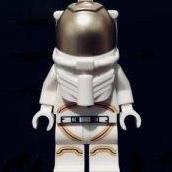-
Recently Browsing
- No registered users viewing this page.
-
Topics
-
Posts
-
By KarlvonKoln · Posted
You could also use a very fine artist's brush to brush between the coils. If you get a size 00 or even 000 that should be small enough for convenience, and with bristles so fine that they are incapable of damaging the hairspring. Get a good one though, like Windsor-Newton or similar. I have never had a Windsor-Newton brush shed on my art or other work. You want a soft brush that will not shed. -
Sounds interesting but how do you push the button if you’re holding both ends? the large current draw overheats after 3-5 seconds and the thermister triggers. A great tool for magnetizing things but I’ve not be able to ever demag anything with it because the emf is so strong it pulls the item off center (down or up). I paid $89 bucks for it from CAS-KER, if someone on the board wants it I’d gladly sell it for $25 plus shipping (probably US only otherwise postal costs are prohibitive). Just sent me a note offline.
-
By watchweasol · Posted
Hi. First thing to do is measure your oil movement as the vx32E and the 43 look very similar but one is a couple of mill smaller the vx32E. Also the canon pinion heights differ attached tech sheets for 7N22. And VX43, check details on the sheets. 7N22A_29A_33A_42A_43A.pdf VX43.pdf Hattori VX32E - Specification.pdf Hattori VX32E - Disassemble.pdf -
Thank you for your introduction and welcome to this friendly forum. We all look forward to your contributions and continued involvement.
-
By Neverenoughwatches · Posted
I was spitting out flowers and leaves for 10 minutes, fortunately 3 people saw it and promptly whipped out their phones to film the quick " nothing to see here " recovery 🤣🤣
-








Recommended Posts